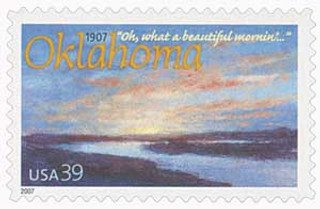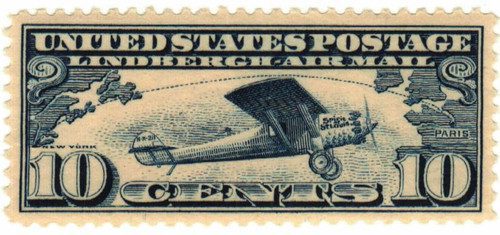William Penn Adair Rogers was born on November 4, 1879, in Oologah, Cherokee Nation (present-day Oklahoma).
Rogers’s parents, Clement Vann Rogers and Mary Schrimsher, were both part Cherokee Indian. Rogers loved cowboys and horses and learned to ride and rope at a young age, earning a place in the Guinness Book of World Records for throwing three lassos at one time.

In 1901, Rogers and a friend traveled to Argentina hoping to find work as gauchos on a cattle ranch. When they failed to find work and lost all their money, they parted ways. Rogers then went to South Africa where he worked on a ranch before joining Texas Jack’s Wild West Circus.
Rogers became a true showman during his time with Texas Jack. While Rogers created a roping and riding act, he learned a great deal about performing from Texas Jack, including what he thought was the secret to show business – leaving the stage early so the crowd would want more.
While Rogers enjoyed his time with Texas Jack, he was anxious to keep moving, so he traveled to Australia and joined the Wirth Brothers Circus. He continued to do his riding and roping and worked on a pony act. Rogers then returned to America in 1904, performing at the St. Louis World’s Fair. From there he got into vaudeville. During a performance in New York City, Rogers roped a steer that had broken free and climbed into the viewing stand. The story became front-page news, helping to make him more famous. He worked in vaudeville for the next 10 years. During this time he married and fathered four children, one of whom would become a World War II hero and later play his father in two movies.
In 1915, Rogers began performing in Florenz Ziegfeld’s Midnight Frolic. Rogers would take the stage in his cowboy outfit, twirling his lasso, and say, “Well, what shall I talk about? I ain’t got anything funny to say. All I know is what I read in the papers.” He’d then tell jokes about the news. His popularity earned him a spot at the Ziegfeld Follies, where Rogers did daring rides and lasso tricks. He also continued to fine-tune his satire, “roasting” Woodrow Wilson’s policies when the president attended one of his performances.
Rogers got into silent films in 1918 when he appeared in Laughing Bill Hyde. He moved west for a three-year Hollywood contract and also set up his own production company. Rogers enjoyed this, but silent films couldn’t capture the best part of his act. He did write a lot of the title cards for the films he appeared in, though.
Rogers appeared in 48 silent films before he found his greatest success in sound films. His first was They Had to See Paris in 1929. Rogers went on to do 21 feature sound films with such stars as Boris Karloff, Hattie McDaniel, and Mickey Rooney. He worked with John Ford three times and often considered him to be his favorite director.
Audiences responded positively to Rogers’s performances, which still managed to include his ad-libbing and political commentaries. Plus, most of his films were family-friendly, so schools would often take students to see them.
In addition to acting, Rogers was also a talented speaker and writer. He was a regular on the lecture circuit and had a weekly column in the New York Times from 1922 to 1935. Beginning in 1926, his daily “Will Rogers Says” column was read by some 40 million newspaper readers. Rogers also wrote for the Saturday Evening Post and had another weekly column called “Slipping the Lariat Over.” And he produced a number of humor books over the years.
Beginning in 1929, Rogers started doing radio broadcasts for the Gulf Oil Company. The Sunday night show, The Gulf Headliners, was immensely popular. But Rogers had a tendency to lose track of time and talk beyond his half hour time limit. So he began using a wind-up alarm clock to remind him it was almost time to end the show. Eventually, the show was introduced as “Will Rogers and his famous alarm clock.”
Rogers was also interested in politics. He served as a goodwill ambassador to Mexico and served briefly as mayor of Beverly Hills. He also went on a cross-country fundraising tour for the Red Cross during the Depression. In 1928, Rogers ran for president as the “bunkless candidate” of the “Anti-Bunk Party,” to poke fun at the campaigning process. On Election Day he claimed he had won and resigned, as he initially promised he would.

In the 1920s Rogers became very interested in aviation. He was the first civilian to fly coast to coast with airmail flights and became friends with such notable aviators as Charles Lindbergh. Rogers used his newspaper columns to inform the American public of the safety and convenience of flying.
On August 15, 1935, Rogers and his friend Wiley Post were flying in Alaska. Post was exploring the possibility of an airmail route to Russia. Rogers went along to gather material for his newspaper column. They encountered bad weather near Point Barrow, Alaska, and crashed, killing both men instantly.
Before his death, Rogers allowed a statue of him to be placed in the US Capitol to represent the state of Oklahoma. He asked that it face the House Chamber so he could “keep an eye on Congress.” It’s the only statue there to face the chamber entrance. Also, whenever a president enters the chamber to deliver their State of the Union address, they rub his left shoe for good luck.
Click here for some quotes by Will Rogers.
| FREE printable This Day in History album pages Download a PDF of today’s article. Get a binder or other supplies to create your This Day in History album. |
Discover what else happened on This Day in History.










Great story until now unknown to people in Europe and probably to the younger generation in the USA as well. Will Rogers, apparently a remarkable, intelligent, dynamic and lovely man!. Thanks to Mystic Company for informing us about a man, who deserves to be better known as a great example of what the USA can be as the place, where much is possible for making life more interesting and more fun to everybody.
What an incredible life. He accomplished so much and my impression is without hate or disdain. So much positive energy. Thanks again Mystic
His statue in the us capital facing congress to keep an eye on them was very interesting, and
The President rubbing his left shoe on the way into the chamber to deliver his state of the
union . Great story! I did not know that.
I always enjoy reading more about this wonderful American icon. Just imagine what more he could have done had he lived longer than his 56 years. He did live life to the fullest. Thank you Mystic.
What great reading. Thank you Mystic!
Mystic, this is one of your best.
I just visited the Gene Autry museum near Pasadena CA & they say Will Rogers ‘discovered’ Autry. Autry was a telegraph operator who sang & Rogers heard his sing. If you are ever in LA the Autry museum is worth seeing.
A truly interesting article, with all the additional info presented. Made for a great read.
But pray why rub the left shoe (why not the right one) 😛 …
Great read! As long as mystic keeps us up to date with these great memories of these memorable legends because of being on stamps , this hobby will continue to be very enjoyable!
What do you mean by moderation??
We have to screen comments for foul language, spam, illegal content, etc.
Great life story. Thank you for sharing!